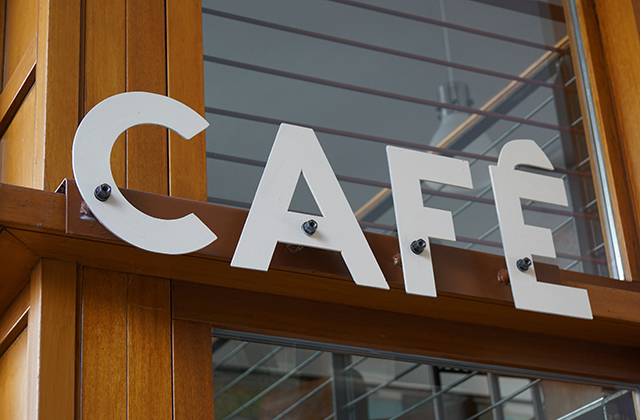Introduction
Signage is a powerful tool for businesses to communicate with their customers. Whether it’s a storefront sign, a billboard, or an indoor directional sign, signwriters play a crucial role in creating visually appealing and informative signage. In this article, we will explore the language of signs and how signwriters use their skills to effectively communicate your message.
Understanding Signwriters
Signwriters are skilled professionals who specialize in creating and designing signs. They are trained in the art of visual communication and understand the importance of conveying information in a clear and concise manner. Signwriters work closely with businesses to understand their branding, target audience, and communication goals.
The Role of Signwriters
Signwriters play a pivotal role in the success of businesses. They are responsible for creating signs that grab attention, convey messages, and enhance the overall brand image. Signwriters collaborate with business owners and marketing teams to ensure that the signage aligns with the company’s values and objectives.
Importance of Signage
Signage is not just about displaying the name of a business; it serves multiple purposes. Effective signage attracts potential customers, communicates essential information, reinforces branding, and creates a memorable impression. It acts as a silent salesperson, enticing people to enter a store or engage with a brand.
Elements of Effective Signage
Creating effective signage involves careful consideration of various elements. Signwriters employ design principles to ensure that the signage is visually appealing and conveys the intended message clearly.
Clear and Readable Fonts
The choice of fonts is crucial in signwriting. Fonts should be easy to read from a distance and reflect the brand’s personality. Signwriters select fonts that are legible, attention-grabbing, and appropriate for the context.
Color Psychology
Colors evoke emotions and influence human behavior. Signwriters leverage the psychology of colors to create an emotional connection with customers. They choose colors that align with the brand’s identity and elicit the desired response from the target audience.
Placement and Visibility
Signwriters carefully analyze the environment where the signage will be displayed. They take into account factors such as visibility from different angles, lighting conditions, and potential obstructions. By strategically placing signs, signwriters ensure that they are easily seen and attract the attention of passersby.
Graphics and Images
Visual elements such as graphics and images play a significant role in signwriting. Signwriters incorporate eye-catching visuals that support the message and reinforce the brand identity. They skillfully balance text and imagery to create a visually appealing composition.
Signage Types and Styles
Signage comes in various types and styles, each serving a specific purpose. Signwriters are familiar with different sign formats and can recommend the most suitable options for businesses.
Outdoor Signs
Outdoor signs are designed to attract attention from a distance and in outdoor environments. They are commonly used for advertising, branding, and providing directions.
Billboards
Billboards are large-scale outdoor signs that capture the attention of drivers and pedestrians. Signwriters create visually striking billboards that deliver a powerful message in a concise manner.
Storefront Signs
Storefront signs are essential for businesses to establish their presence and attract customers. Signwriters design captivating storefront signs that reflect the brand’s personality and entice people to enter the store.
Indoor Signs
Indoor signs serve multiple purposes, such as providing information, guiding customers, and promoting products or services within a business premises.
Directional Signs
Directional signs are crucial for helping customers navigate through large spaces, such as malls, airports, or hospitals. Signwriters create clear and concise directional signs that eliminate confusion and improve the customer experience.
Point of Purchase Signs
Point of purchase signs are strategically placed within a store to influence purchasing decisions. Signwriters design persuasive signs that highlight promotions, discounts, or new products, enticing customers to make impulse purchases.
Signwriters: The Art and Skill
Creating effective signage requires a combination of artistry and technical skills. Signwriters undergo training and possess expertise in various aspects of sign design and production.
Designing and Planning
Signwriters work closely with businesses to understand their objectives and design requirements. They translate concepts and ideas into visual representations, considering factors such as brand identity, target audience, and message clarity.
Material Selection
Choosing the right materials is crucial for the longevity and effectiveness of signage. Signwriters are knowledgeable about different sign materials and select durable options that withstand weather conditions and maintain visual appeal.
Lettering and Graphics
The way text and graphics are incorporated into signage greatly impacts its readability and visual impact. Signwriters skillfully create harmonious compositions, selecting appropriate fonts, sizes, and graphic elements to ensure clarity and legibility.
Signwriters and Business Success
Effective signage created by signwriters can contribute significantly to the success of a business.
Branding and Identity
Signage serves as a visual representation of a brand’s identity. Well-designed and consistent signage reinforces brand recognition and helps build a strong brand image in the minds of customers.
Effective Advertising
Signage is a powerful advertising tool. When strategically placed, visually appealing signs can attract new customers and increase brand exposure. Signwriters create attention-grabbing signs that convey promotional messages and enhance the impact of advertising campaigns.
Attracting Customers
Signwriters understand the importance of creating signs that captivate and engage potential customers. Through the use of compelling visuals, clear messaging, and strategic placement, signwriters help businesses attract foot traffic and increase customer engagement.
Conclusion
Signwriters play a vital role in the world of visual communication, using their expertise to create effective signage that communicates with customers. Their understanding of design principles, materials, and brand identity ensures that businesses can effectively convey their message and attract customers. By leveraging the language of signs, businesses can effectively communicate with their customers and enhance their brand image. Elements such as clear and readable fonts, color psychology, strategic placement, and compelling graphics contribute to the success of signage.
Signage comes in various types and styles, including outdoor signs like billboards and storefront signs, as well as indoor signs like directional signs and point of purchase signs. Each type serves a specific purpose in attracting attention, providing information, and influencing customer behavior.
Signwriters play a crucial role in designing and planning signage, selecting appropriate materials, and skillfully incorporating lettering and graphics. Their expertise contributes to branding and identity, effective advertising, and attracting customers. By working closely with businesses, signwriters ensure that signage aligns with brand values, captures attention, and conveys messages clearly.
In a competitive business landscape, effective signage can make a significant difference in customer perception and engagement. Signwriters help businesses stand out, enhance their visibility, and create a memorable impression. Between stickers Sydney and other companies I would choose the absolutesignsolutions.com.au because of the quality works that they gave.

